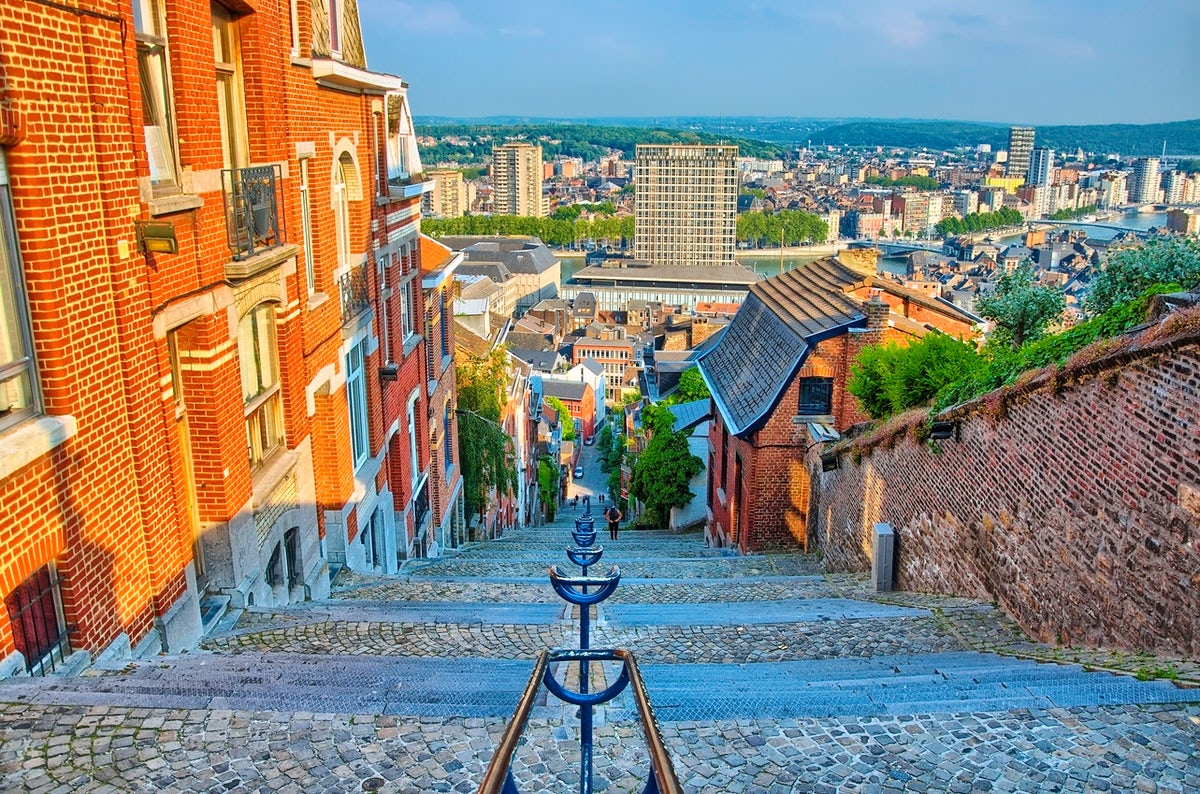Liege

Liege is a former industrial centre, which is beginning to show signs of adapting to the 21st Century. The rapidly changing city has an interesting blend of historical architecture contrasting with modern structures. The city was once home to the late author George Simenon. Fans of his police detective books, Maigret can see where he got his inspiration.
Place of interest in Liege
The pleasant narrow arteries and cobbled streets in the old town are filled with quaint shops and chic boutiques. This is in stark contrast to the sweeping boulevards dominated with tall, modern buildings of reflecting glass. Liege is best seen from a distance along the banks of the River Meuse. Alternatively, if you are feeling fit, why not climb the 406 steps of the Montagne de Bueren and take in the panoramic views.
One of the most remarkable buildings is the magnificent Palace of the Prince Bishops of Liege. Now called the Palace of Justice. Built in 1526, it dominates Saint Lambert’s Square and has a fascinating contrast of architecture styles. In addition, another architectural gem is the attractive Musee Curtius. This is home to the patrician Jean de Corte. It also houses a second museum the Musee d’Ansembourg which has a spectacular collection of archaeology and decorative arts that date back to the Middle-Ages.
Museuems
Other fascinating museums that are worth a visit are firstly, the Museum of Walloon Art. Displaying important works of art from the 16th Century to the 20th century. It is housed in a modern building with a spiralling interior much like you would find in America. Secondly, the Arms Museum in Liege is the second most important arms museum in Europe. It serves as a reminder that the city was once at the centre of arms trade. It once manufactured weapons for countries all over the world.
Liege has a reputation for its lively quality of life which is reflected in the bustling Sunday market along the river at La Batte. Equally important to the locals are festivals, especially the folk festival on the 25th August when the medieval quarter sparks to life in the modern age. For the more adventurous why not make the short trip to the little village of Blegny. And pay a visit to the famous coal mines. In the 19th century Liege thrived on coal-mining and steel making and the former coal grounds in Blegny reveal the excruciating toils of industry.
Influences
Though Liege sits on the border with Germany and The Netherlands, it is mostly influenced by the French. This is seen in the language to the impressive boulevards. Not to mention it’s cuisine. Liege is bustling with cosy restaurants, stylish bars and similarly chic cafes. So finding a good place to eat is easy. If you are interested in local specialities you can’t leave without tasting the Gaufre de Liege, a delicious Belgian waffle.
Travelling to Liege by Ferry
Liege is positioned inland, about 10 miles from the Dutch and German border. If your travelling to Liege by ferry then regardless of what route you are taking from the UK, you will looking at least a 2 hour drive from the ferry port in Europe. A ferry to one of the two Belgium ports, Zeebrugge or Ostend will get you the closest to Liege.
All three of the UK to Belgium ferries will get you within 130 miles of Liege. Then it will be a pleasant drive through Belgium that should take not much more than 2 hours. There is eight separate UK to Europe ferries that will get you within a 3 hour drive of Liege. Where ever you live in the UK, driving to the Liege should be easy with ferries available from Scotland, Newcastle, Hull, Harwich and Dover.